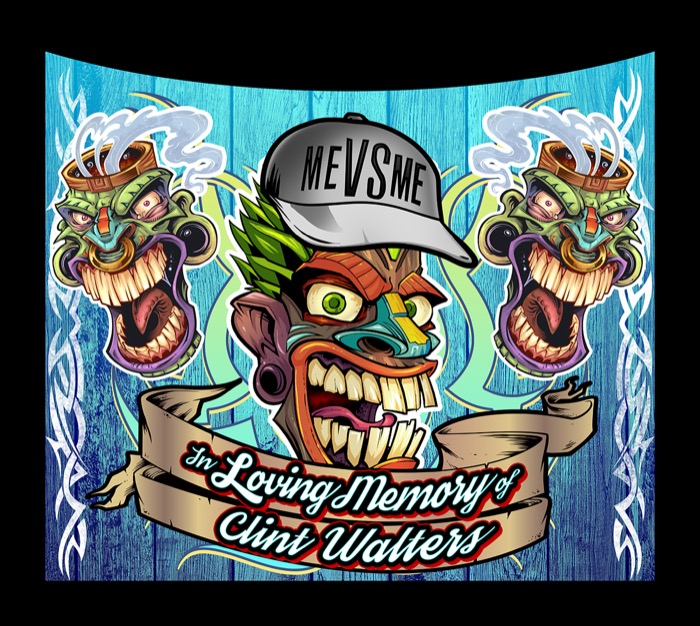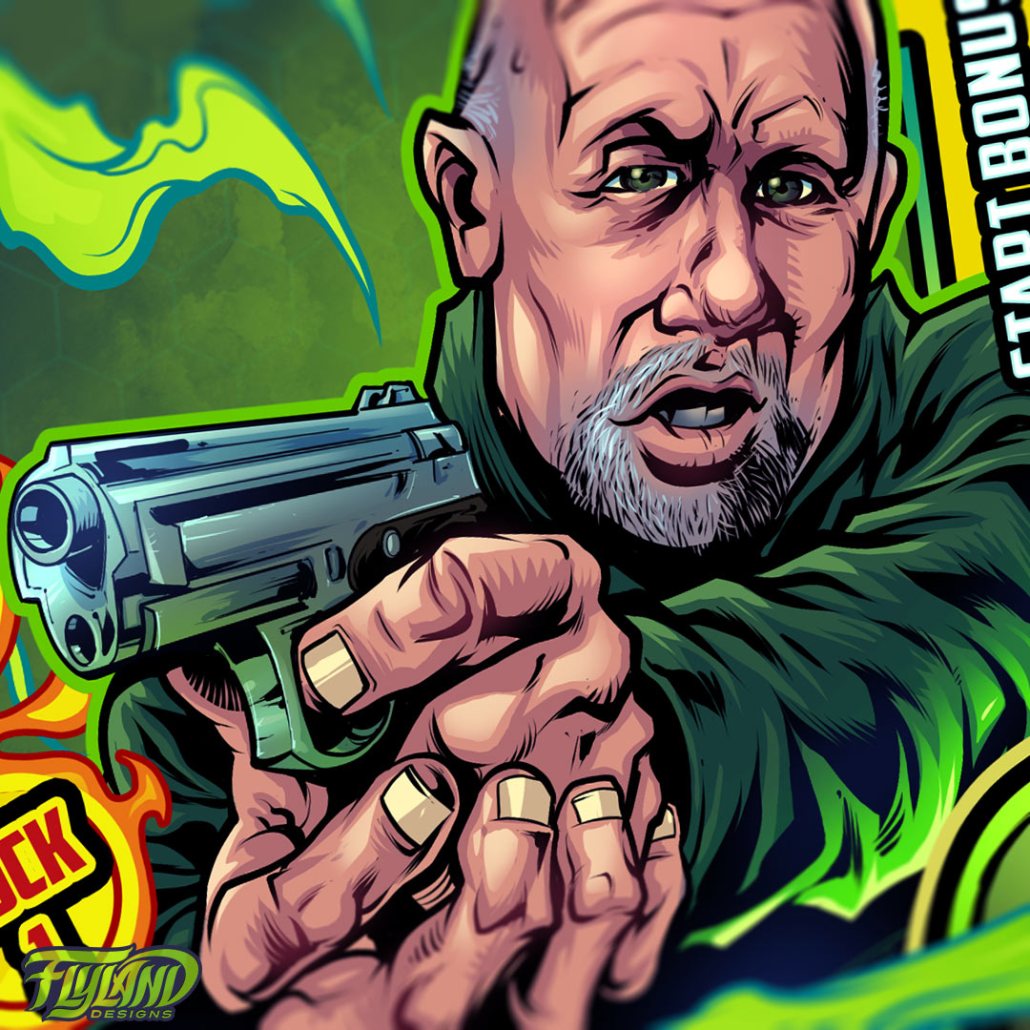I was fortunate enough to be interviewed by the TShirtonomy.com, a site that features new t-shirt design trends and artwork.
I’m humbled to be a part of their impressive lineup! If you’re interested in learning a little more about me, and how I design T-Shirts, check out the full interview here:
It’s been a while between artist interviews, but today we’re very lucky to have had the opportunity to interview the extremely talented Brian Allen of Flyland Designs.com
How would you introduce yourself and your art to people who may not familiar with you?
My name is Brian Allen, I am a full-time freelance illustrator working in my studio called FlylandDesigns.com. I’ve got a wife, two kids, and a lawn to mow. Life is good! I’m really a pretty ordinary guy – In fact, my artwork and the clients I work with are often a lot cooler than I am!
I work with small businesses, bands, and large companies as well, like Hard Rock Cafe, Spiral Direct, and American Greetings.
How did you get started designing t-shirts?
I love designing t-shirts, but I actually never set out to specialize in that as much as I am now. When I first started as a freelancer illustrator, I was grabbing any job I could get (even web design, which I am quite terrible at). As my artwork starting getting better and my portfolio became more focused, I started getting a flood of T-Shirt projects. This made sense, I guess, because my artwork is line-art driven, and usually high-contrast and colorful, which are the main ingredients for some cool T-Shirts.
I quickly hunted out every resource I could to learn how to design for shirts, and the complicated process of silk-screening. It was a bit of a clumsy process at first, but I’ve learned a lot from talking with other artists and printers since then.
What inspires your work?
I make a point to seek out artists and follow their work on social networks like Facebook, Instagram, Behance, and Mintees. It’s so amazing how easy it is to quickly put together a feed of amazing artwork. It can also be overwhelming and intimidating if you’re not careful.
Other than that, I draw a lot of inspiration from the pop culture that I grew up with in the 80s and early 90s. Movies, comics, and music of that era.
Can you give us any insight into your creative process?
For many years, I used to draw and ink on paper, and color digitally in Photoshop. About four years ago, I switched to a 100% digital workflow once I discovered the Wacom Cintiq, which is a monitor and tablet combined. I feel my artwork improved a lot about two years ago, when I switched to Manga Studio 5 for most of my process. In my opinion, it is the best piece of software for drawing and inking, and it has a ton of cool features (like painting with halftones) that make designing t-shirts efficient and enjoyable.
I typically start my designs with a series of rough thumbnails. After choosing the best one, I blow it up, and draw over top. Once I’ve got a pretty clear drawing, I usually turn the color to a light blue, and carefully ink the image. My artwork is usually heavily line-art driven, so my coloring process is similar to the techniques used by comic book artists. I drop in the flat colors, make a copy of that layer, and use the flat color layer to make quick selections as a apply the shading, highlights and rendering. When designing T-Shirts, I typically keep each color on a separate layer, to make the separation process easier.
Which is your favorite design of your own?
My favorite design was a full-color direct-to-garment design I created as a personal project called “Take-Out,” featuring a crazy looking alien with a hot-looking redneck girl tied to the hood of his hot-rod/spaceship. There’s just something about this piece where everything worked (which is rarely the case), and if every project I worked on was exactly like this, I’d be perfectly happy.
Which has been your most successful design to-date?
I believe the most popular design I’ve created was a parody illustration of Cheech and Chong as zombies. The silk-screening was perfect, and the posts about the image were shared more than and reached more people than any other posts I’ve made. It was even featured on Cheech and Chong’s own social media outlets. The design was created for an apparel brand called Marijuana Zombie.
Who are some of your favorite artists?
H.R. Giger and Luis Royo.
Favorite T-Shirt designers: Angry Blue, Godmachine, Dane Henry Jr, Felix LaFlamme.
What are some of your interests outside of art?
My family and I love camping – there are a lot of great places to go here in Pennsylvania, and it’s a lot of fun now that my kids are big enough that I don’t have to worry about them getting carried off by squirrels.
What are your vices?
I often get myself into trouble by taking too many things on at once. I’ll end up trying to go in too many directions at once, and then I can’t really focus enough on any one thing. I’m working on it!
Hypothetical dinner party, you and any two people, dead or alive, who do you choose?
Louis C.K. – I admire his ambition and complete devotion to his art. I heard that every year he completely throws away his previous act, and starts over from scratch, never telling the same joke from the previous year again. I wish I was that fearless!
Ronnie James Dio – Because … well, because Dio.
Are you currently working on anything we should keep an eye out for?
I recently partnered with RageOn.com, the largest distributor of dye-sublimated apparel. I’ve opened up a shop with them, and they will be selling many of my designs exclusively. What makes them different than other T-Shirt sites is that they print the design on every inch of the shirt – even the shoulders and sleeves – and the designs are in full color.
I recently created a design I’m excited about featuring Kermit and Ms. Piggy as a pimp and ho entitled “Pig Pimpin.” You can.
———
Thanks for your time Brian, we look forward to seeing more from you in the future!
You can checkout all of Brian’s work on his website, here: https://www.flylanddesigns.com
He’s also on Facebook, Instagram, Twitter, and Behance.





































































































 I’m so excited to be sharing this – some of my work was published in Black and White Volume 2 by Out of Step Books, a collection of artwork from some of my favorite artists, like Freak City and Ben Kwok (Bioworkz).
I’m so excited to be sharing this – some of my work was published in Black and White Volume 2 by Out of Step Books, a collection of artwork from some of my favorite artists, like Freak City and Ben Kwok (Bioworkz). 






































 ©Brian Allen
©Brian Allen

 Brian Allen, FlylandDesigns.com
Brian Allen, FlylandDesigns.com
 ©Brian Allen
©Brian Allen
 Brian Allen, FlylandDesigns.com
Brian Allen, FlylandDesigns.com